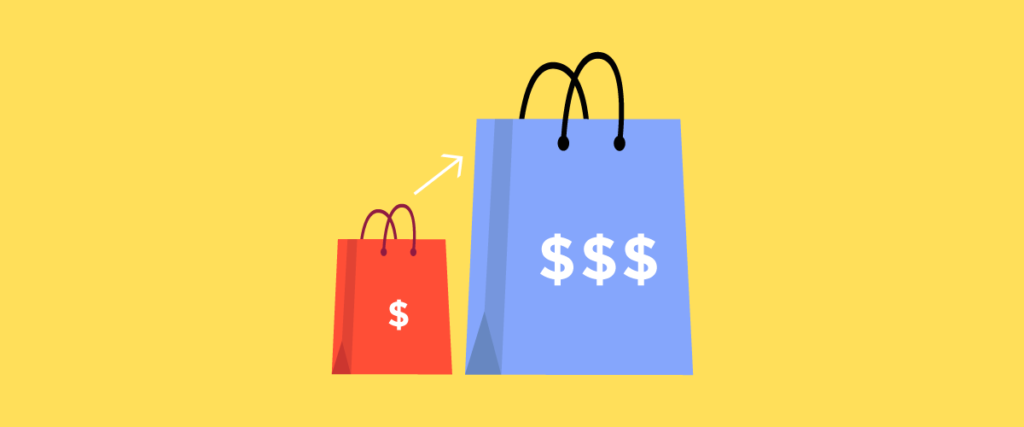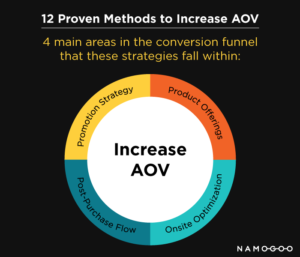Bonus Material: Exclusive AOV Industry Benchmarks Report
Average order value, or AOV, is a commonly-reported eCommerce metric that measures how much each order is worth over a period of time.
Unlike metrics like revenue per visitor (RPV), average order value is calculated independently of other KPIs like conversion rate.
Many eCommerce teams prioritize more prominent metrics (like conversion rate) in their optimization efforts and neglect AOV.
In this guide, you’ll learn why that’s a flawed approach, how to calculate AOV, and most importantly, 12 proven strategies to increase average order value in your sales promotion strategy, product, onsite experience and even after the purchase.
How to Calculate Average Order Value
Average order value is calculated by dividing the total value of all orders over a period of time by the total number of orders over the same period.
Average Order Value Formula
Why Average Order Value is Important: 5 Benefits of Improving AOV
Most eCommerce teams keep an eye on their conversion metrics, constantly tweaking and optimizing the funnel to build a scalable, profitable online channel.
But metrics like AOV are often put on the back burner in favor of more popular KPIs like conversion, cart abandonment, and customer retention rates.
When your team is prioritizing growth experiments, scheduling A/B tests and vying for engineering resources, secondary metrics like average order value are easy to overlook.
But the impact of improving AOV by 10% is the same as the impact of improving CR by 10% (all else remaining the same):
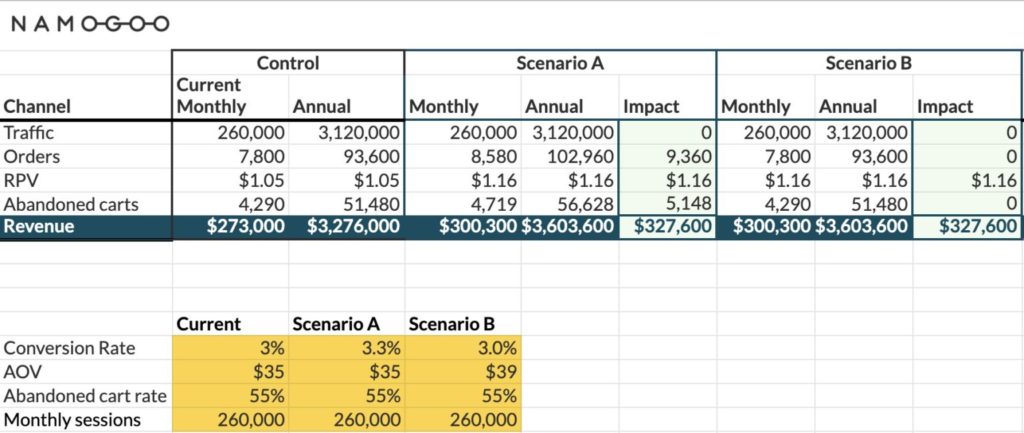
And it’s easier to improve AOV by 10% than conversion rates by the same amount. That’s because average order value is a metric that exists at the very bottom of the funnel, with customers who have immediate and high purchase intent — they are converting.
They’ve already made their purchasing decision, and now you just have to motivate them to buy more products.
When you’re considering what metric to build your team’s quarterly or annual goals around, don’t discount AOV.
While increasing average order value may seem like a benefit unto itself, a higher AOV can provide upside to other key eCommerce metrics as well.
#1. Drive Revenue Growth
This is the most obvious benefit of increasing average order value: revenue growth.
You work hard driving traffic, personalizing the customer experience, A/B testing and optimizing the conversion funnel. Too hard to not focus on increasing cart size.
Improving your average order value helps to maximize those efforts by avoiding having those customers your team has worked so hard to convert check out with only one item in their cart and call it a day.
#2. Protect eCommerce Margins
It’s expensive to ship just one product, especially lower priced products.
And unless you pass shipping costs onto the consumer, which undoubtedly hurts conversion rates, those shipping fees can quickly cannibalize your eCommerce margins.
Increasing average order value can help you protect your eCommerce margins as per-item shipping costs are reduced.
#3. Improve Customer Lifetime Value
When done strategically, driving up cart size doesn’t only impact your revenue.
It can also improve your customer lifetime value in two ways:
- Many customers will have a higher value first order, incrementally improving LTV even if they never repurchase
- Encouraging an increase in cart size through add-ons, up-sells, and cross-sells introduces customers to other products (ideally high retention products) that they may be likely to purchase again, even if they wouldn’t have repurchased the initial product.
#4. Drive Marketing Channel Profitability
Any time you improve any eCommerce metric, you also see a positive impact on the profitability of your marketing channels, even if every other variable remains the same.
A recent scenario of improving average order value with a client demonstrates this perfectly:
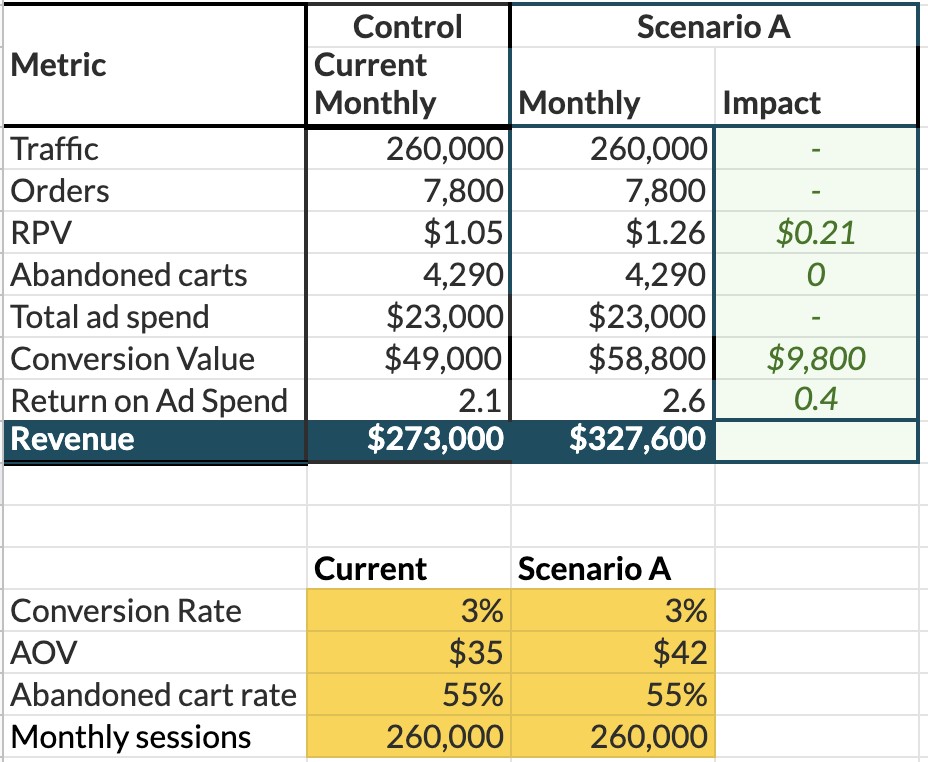
By improving AOV by 20% from $35 to $42 using some of the strategies in this guide, their return on ad spend (ROAS) on Facebook improved from 2.1x to 2.6x, freeing up more cash to invest further in social advertising.
This impact is seen across all marketing channels.
Bonus: Improve Conversion Rates
Increasing average order value will improve your revenue per visitor (RPV), regardless of whether your conversion rate remains the same:
But many of the strategies in this guide will help you improve conversion rates too, providing an even more impressive lift in RPV.
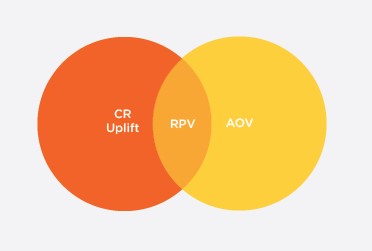
For example:
- Increasing AOV by upselling, cross-selling, and promoting complementary and recommended products using the methods described below will help customers become aware of the other products you offer. If the product page they landed on didn’t satisfy what they were looking for, introducing them to more of your products helps to keep them onsite and reduce bounce rates.
- If you improve your margins to the extent that you can either reduce shipping costs passed onto the consumer or offer free shipping, you’ll undoubtedly improve your conversion rates.
These are just two ways you can improve conversion rates when you focus on improving AOV.
How to Increase Average Order Value: 12 Proven Methods
Below, I’ll outline 12 methods of increasing average order value. These are proven strategies used by some of the most respected brands in eCommerce.
I’ve personally A/B tested many of these strategies in my past roles as SVP of eCommerce with impressive results, driving improvements across virtually every eCommerce funnel metric — not just AOV.
There are four main areas in the conversion funnel that these strategies fall within:
- Your promotion strategy
- In your product offerings
- Through onsite optimization
- In your post-purchase flow.
Not every method will apply to your brand or industry, but you’ll find at least a few ideas you can kick off immediately.
Increase AOV Through Your Promotion Strategy
A solid sales promotion strategy can not only boost average order value, but also drive conversions, improve customer retention and lifetime value, preserve brand equity, protect margins and profitability, and optimize your channel-level ROI.
So your team’s sales promotion strategy is the perfect place to set your sights when you’re embarking on an AOV improvement project.
These strategies are easy to implement, and you can kick them off in under an hour to get some quick wins.
Here are the three strongest AOV boosters available.
#1. Implement a Minimum Shipping Threshold & Improve Margins
In 2021, free shipping is expected online.
Seeing a shipping charge is a driver for why many shoppers abandon their carts, and nearly 80% of consumers cited free shipping as a key factor for their online purchasing decisions[*].
Read More: Digital Shopping Cart Abandonment: A Data-Driven Guide
But taking on shipping costs can quickly erode eCommerce margins, especially when you have to pay to ship one lower-priced item.

So this strategy for increasing average order value pulls double duty by improving margins and AOV. The strategy? Implement a minimum cart value to get free shipping.
Check out how one of Namogoo’s customers, Allbirds, has a free shipping threshold in their cart.
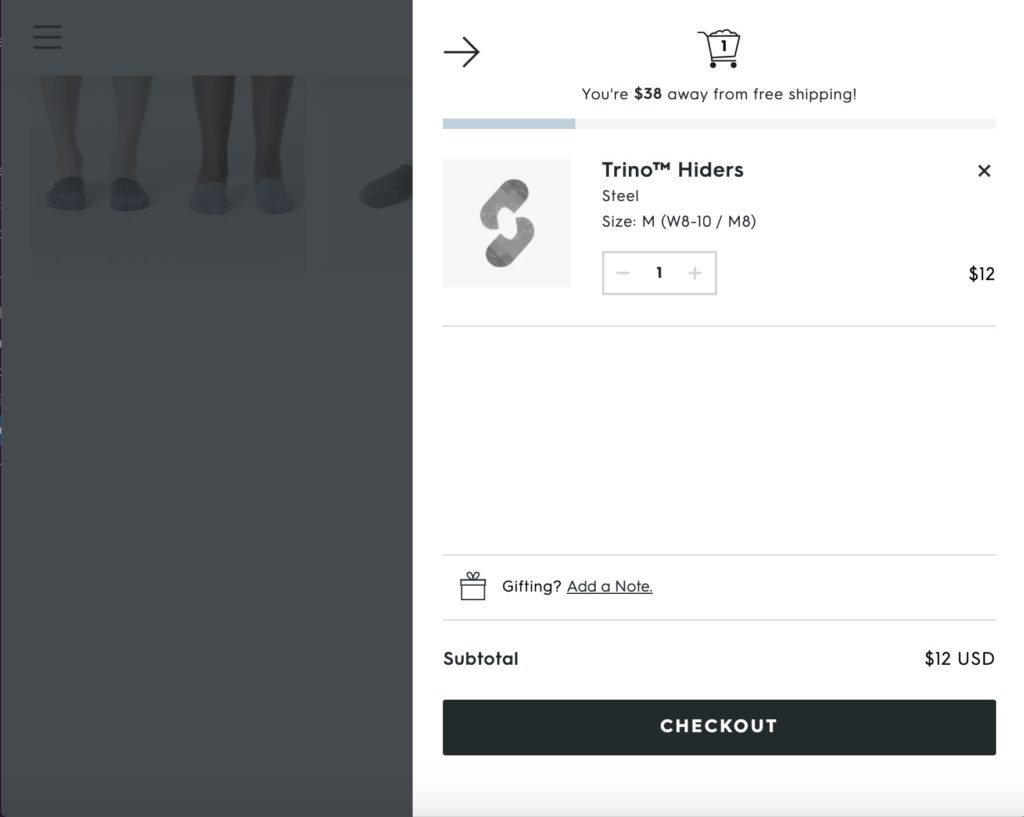
This doesn’t drive the customer away as a surprise shipping charge at checkout might, but incentivizes the customer to continue shopping.
Choose a minimum cart value of just over your existing average order value, and consider the price of complementary products. For example, my AOV is currently $39.

It costs me an average of $8 to ship one product, but adding an additional product only costs an incremental $1.
My average product costs $35, and most of my complementary products and add-on items are around $10.
So I can set my minimum shipping threshold to $45 and drive average order value up.

In my worksheet above, you can see that even with a promotion of 10% applied, my margins improve and I get to reap the benefits to AOV.
#2. Offer a Free Gift Card & Guarantee Repeat Purchases
Sometimes, a promotion is so well thought out that it pulls double or triple duty, not only improving CR and AOV, but also driving repeat purchases at the same time.
This strategy is one of them.
Instead of offering a discount for your next product launch or holiday sale, consider offering a free gift card to incentivize purchases. In this brilliant example, Ancient Nutrition gives away a free gift card (buy more, earn more) with every purchase over $75:
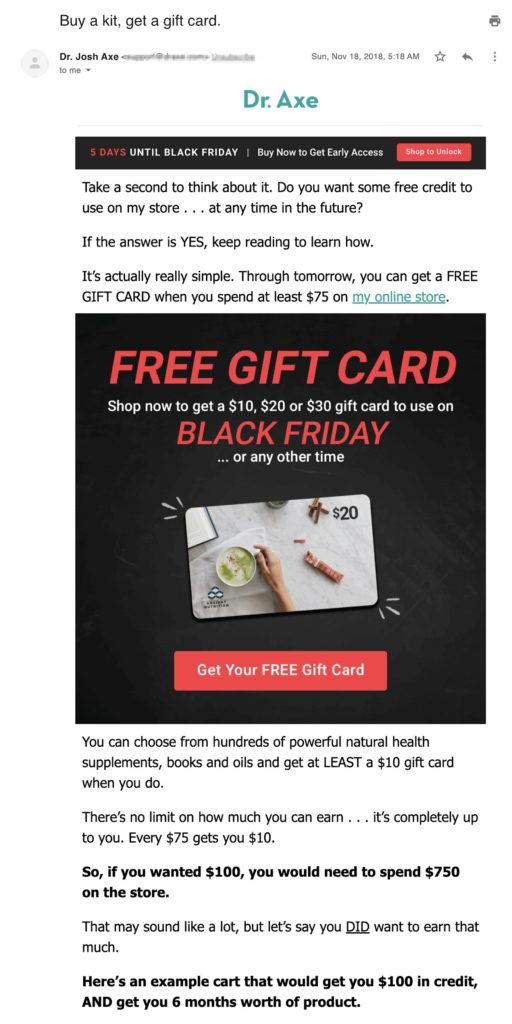
Every $75 spent earns $10 in gift card credit.
Not only are they driving higher cart value with this promotion, but they’re also:
- Incentivizing future orders, improving customer lifetime value
- Reducing discounting as this is a discount-free promotion.
This is an especially effective way to incentivize customers to complete their order without interfering with upcoming holiday events, like Black Friday.
For example, if you have a product to launch in October, you can launch with a discount like this without stealing revenue away from BFCM.
#3. Incentivize AOV to Customers with High Purchase Intent
Serving the promotions above to every customer, regardless of their customer segment, onsite and off-session behaviors, and purchase intent is a losing strategy in 2021.
Treating all of your visitors the exact same can cause the erosion of brand value perception, train customers to expect a discount and provide a poor customer experience.
So that’s why this strategy is crucial:
Only display AOV-building promotions to those most likely to take advantage of them.
Then, your casual browser who is consuming content and has low purchase intent won’t see promotions that may harm their perception of your brand, and increase their price sensitivity when you retarget or remarket to them.
And the high-intent customers who are actually going to convert will be incentivized to increase their cart value.
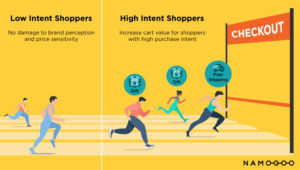
Understanding shoppers’ intent can be tricky. You can segment your site visitors based on their behavior to try and predict their shopping intent.
Or (shameless plug coming right up!) you can use Intent-Based Promotions, which calculates shoppers’ in-session purchase intent in real-time and autonomously determines the minimum promotion needed to convert (if any), and serves the promotion onsite.
It does this by analyzing over 2 billion eCommerce shopping sessions each week to determine the right offer for each specific customer during their session, based on behavioral data such as:
- User status
- Acquisition channel
- Purchase intent
- Onsite behavior
- Spending habits
- Customer journey stage
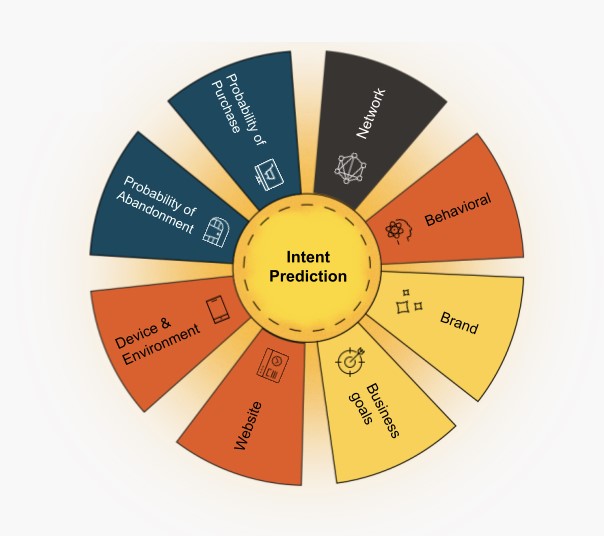
Using a sales promotion tool that taps into consumer’s buying intent and other behavioral data can be a robust driver of average order value because:
- a) It’s automatic – instead of creating dozens of promotion campaigns based on different consumer behaviors, the Intent-Based algorithm does everything autonomously.
- b) It removes the guesswork. The machine learning algorithm won’t be promoting your AOV-increasing promotions to those who won’t buy.
This global industry-leading Namogoo customer personalized the promotions offered to each session with Intent-Based Promotions:
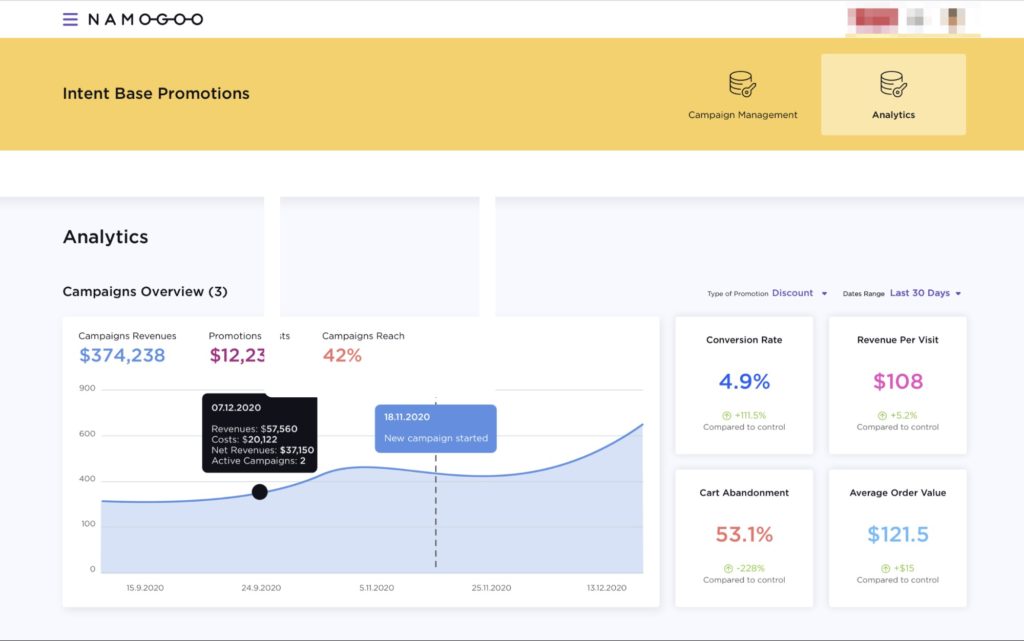
Not only did they increase their AOV by $15 for this one promotion campaign alone, but this eCommerce retailer saw:
- 111% increase in conversion rate
- 5.2% increase in revenue per visitor
- 228% reduction in cart abandonment.
Increase AOV Through Product Offerings
To increase average order value through your products, you have to increase your pricing, launch more expensive products, or both, right?
Luckily, that’s not the case. There are a few creative ways that you can not only increase AOV through your product offerings but also improve repurchase rates and customer lifetime value.
Check out the following strategies.
#4. Bundle Complementary Products to Improve AOV
In certain industries, there are certain products that should be used together, or compliment each other.
These are industries that are primed to take advantage of the magic of product bundling. For example, check out how Native bundles their personal care products into a set:
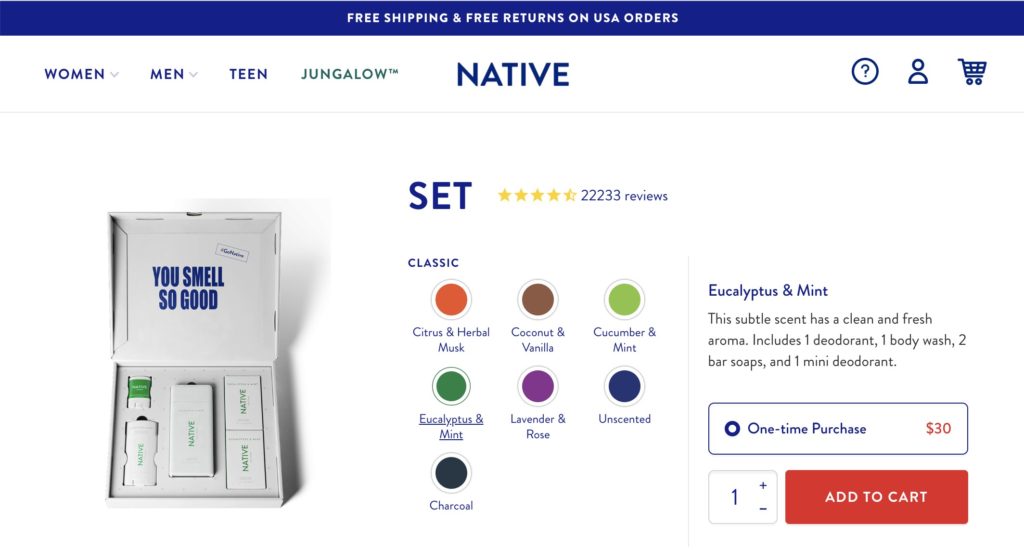
On a personal note, launching product bundles for a previous client was one of the most effective drivers of AOV, helping us increase average cart size by 35%.
In my experience leading eCommerce marketing for CPG brands, product bundles drive high-value customers.
Those customers whose first purchase was a bundle had a higher LTV, were more likely to repurchase, sign up for a product subscription, and become medium or heavy product users.
#5. Personalize Product Selections to Increase Cart Quantity
Set product bundles provide simplicity at the logistics level.
You can create printed inserts to explain each product, how to use them, and how to use the bundle as a whole; they allow you to pre-assemble the bundles in anticipation of high-sales-volume periods like BFCM and Christmas.
But if you want to tap into the full potential of bundles, personalized product kits based on the customer’s preferences and selections can help you take it to another level.
Check out how our customer Dollar Shave Club does this with their customized boxes of products.
If I’m adding DSC’s individual products to my cart on my own, my cart value is fairly low. I’m likely to beeline straight to the products I think I need, rather than exploring other products on my own initiative.
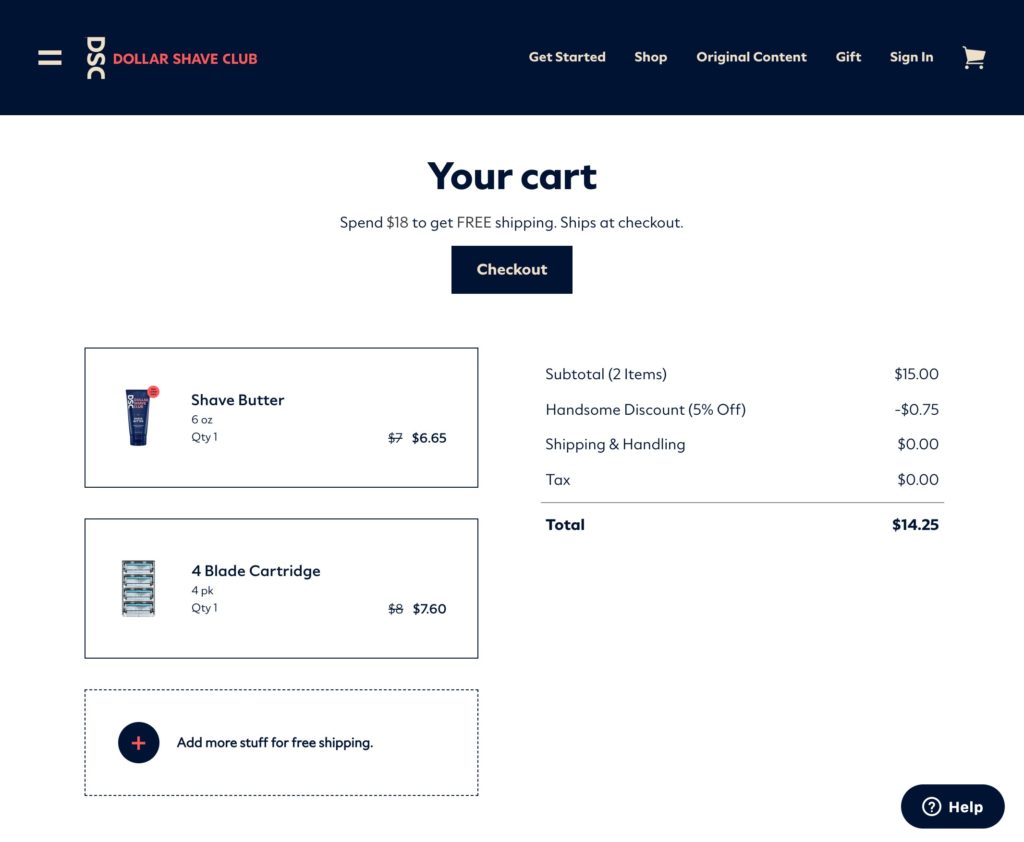
But when I take the short quiz to answer a few questions surrounding my routine, Dollar Shave Club puts together a box of products specific to my needs, driving my cart size up and introducing me to hair and body care products I wouldn’t have otherwise tried.
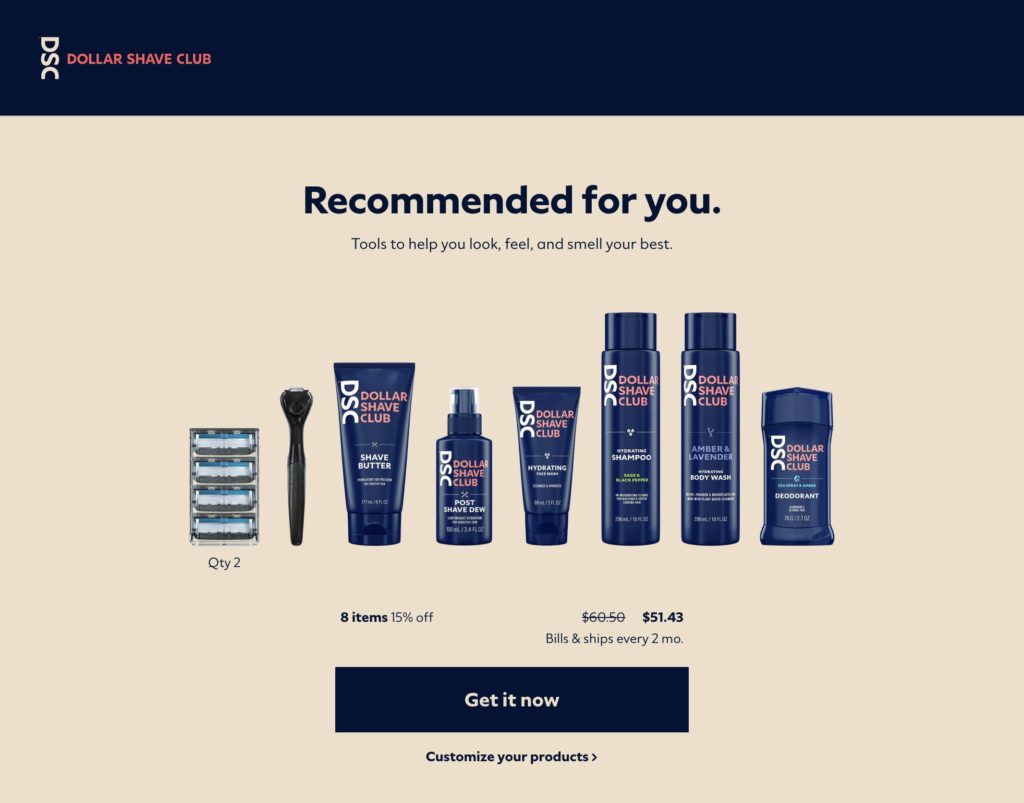
The personalized product selection boosted my cart quantity from 2 items to 8 items, and my order value from $14.25 to $51.43.
The product suggestions feel like they were put together specifically for me, proving that a little personalization goes a long way.
#6. Incentivize Higher Cart Value & Repurchases with Free Samples
Product samples.
Who knew that an entire industry would be built from such a low-cost, simple concept?
Entire companies like Birchbox have been launched based on free product samples, and in the US alone, mini and travel-sized products drew in revenues of $1.2 billion in 2018[*], up 13% from the year before.
Samples are a small but mighty conversion tool for eCommerce companies, and provide many industries like personal care, beauty, health and travel the opportunity to both introduce customers to new products and drive up average order value.
Check out how Glossier uses a free mini-version of a popular product to incentivize higher cart value:
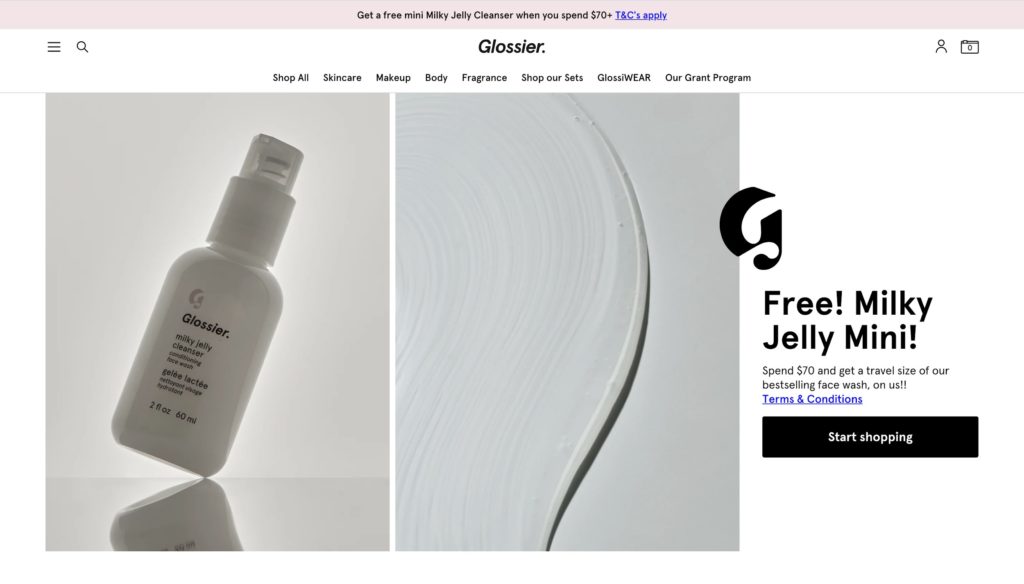
With 3200+ product reviews, their Milky Jelly product is one of their best-sellers, so they’re introducing their customers to a popular, “sticky” product that likely has a high repurchase rate.
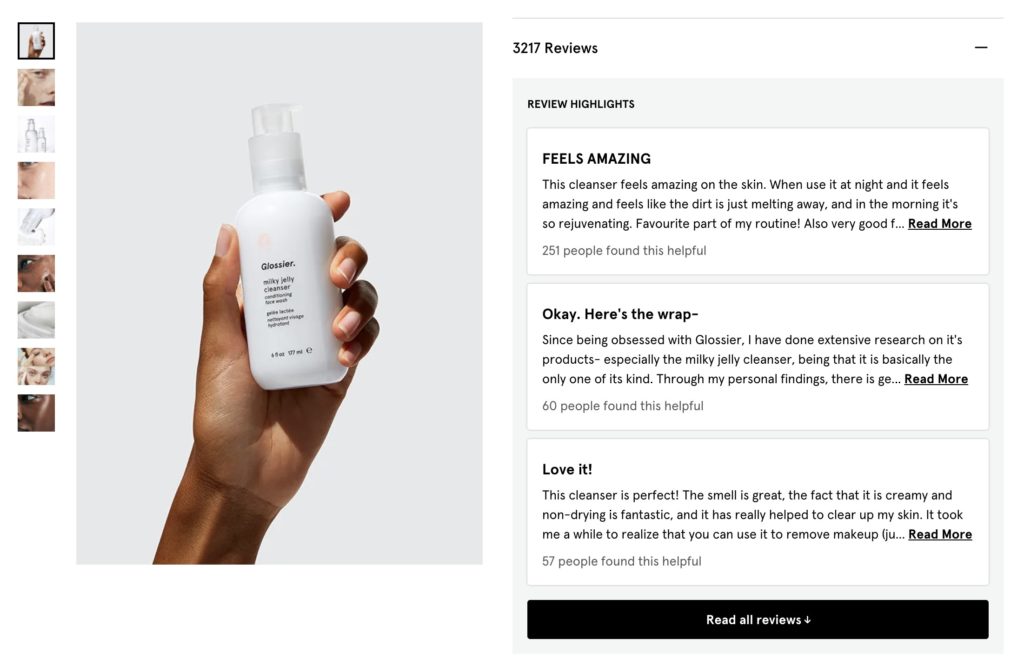
Giving their customers the chance to try it for free when they spend a minimum of $70 no doubt drives up average order value while they run the offer, but it also benefits the eCommerce channel in the long-term as a certain portion of the customers who receive the free sample will return to purchase the full-sized product as well.
Increase AOV Through Onsite Optimization
Average order value isn’t a metric that most CRO teams focus on, which is a shame, because as we saw earlier, it can be a powerful revenue and lifetime value driver.
The strategies below are simple yet effective, and they’re easy to A/B test if you don’t want to kick them off without measuring potential impact first.
#7. Make Customers Aware of High Value Products Prominently
Depending on your marketing channel mix, an analysis of your onsite conversion paths will likely reveal a large portion of your customers landing directly on product pages or collection pages.
This is usually not a problem; these pages are usually the most direct path to conversion.
But it also might mean that your customers don’t spend a lot of time browsing your site, and therefore aren’t likely to be aware of most of your products — other than the one they landed on, that is.
That’s why this strategy has proven to be so effective for many eCommerce brands: ensure you’re making your customers aware of your higher value products, product bundles, and full-sized items.
It seems obvious, but if you truly look at how traffic flows through your site, you may find that you have room for improvement.
Take this example from a leading CPG brand that I previously worked with.
They A/B tested implementing a “quiz” that asked questions about the customer to provide personalized product recommendations. My hypothesis was that customers didn’t know where to start with our products, and recommending products based on their specific needs would help move them down the conversion funnel and improve our conversion rate.
The quiz turned out to be a success, but not as expected. Rather than having the biggest impact on conversion rates, it improved average order value more.
That’s because the results recommended products from a specific collection that would fit the customer’s onsite behavior and survey answers. In almost all of their collections, they had a bundle that displayed in the quiz results.
They saw an AOV uplift of 6%.
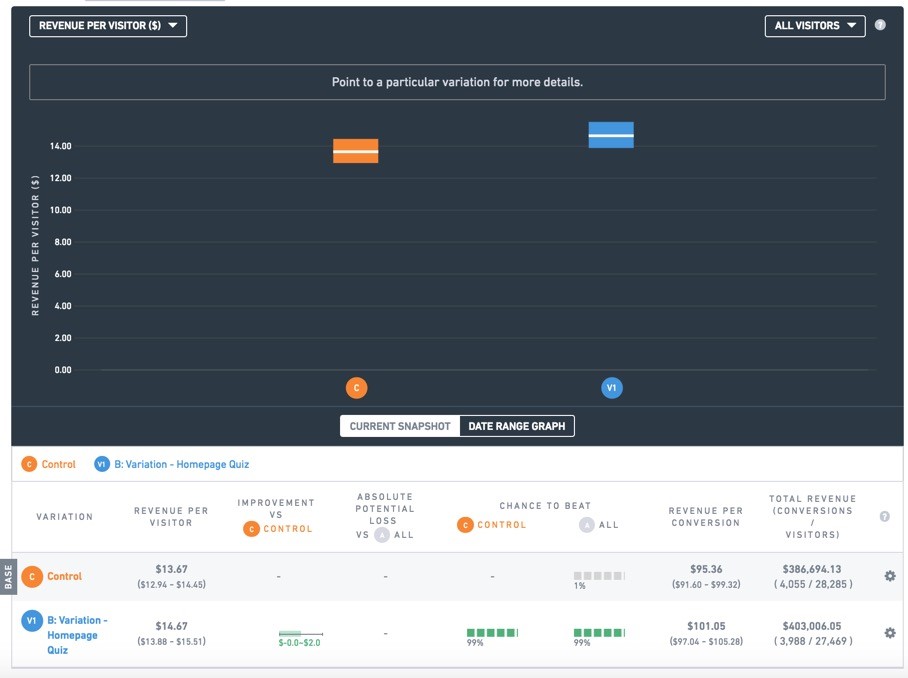
As a result of the increase in average order value, revenue per visitor (RPV) increased by 8%. If all other variables remained the same (including traffic and conversion rate), this lift would have resulted in an incremental increase in annual revenue of $1.5 million.
All while introducing customers to products they wouldn’t have otherwise purchased through the bundle, increasing customer lifetime value as well.
#8. Default to Higher Value Variations on the Product Page
If you offer variations on the same product page (like different flavors, colors, or sizes), there is one variation that sells better than all others.
And if I had to make a bet as to which variation that is, I’d put my money on the default selection on your product page.
That’s because, unless we’re talking clothing sizes, online shoppers tend to roll with the default selection. Perhaps it’s because they’re moving quickly and barely notice the alternatives, or maybe it’s social proof – they expect that the default selection is the most popular variation.
Regardless of the reason, this tendency can help you with inventory control (by setting the variation you have robust inventory of, or want to clear out, the default selection) and it can also help you improve your average order value.
Simply set the higher value item as the default on your product detail pages, like Sephora does with their “Standard size” items:
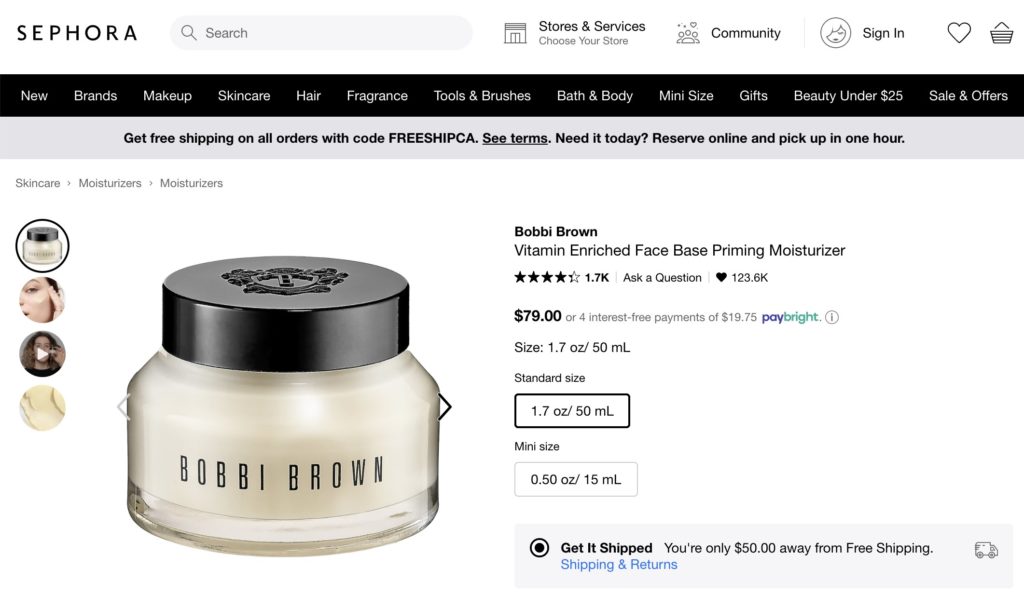
Depending on the brand and products you offer, this could be the most simple and immediate AOV uplift you can implement.
#9. Promote Additional Products by Cross-Selling
As a marketer, anytime something persuades me to behave the way the company undoubtedly wants me to behave, I pay attention.
And Namogoo’s customer ASOS gets me to add more items to my cart better than any site I’ve seen.
I’ll visit ASOS intending to browse, and end up going down a rabbit hole on their product pages, adding item after item to my cart; not only the original item I clicked on from the collection page, but many of the items in their “Buy the Look” section, too.
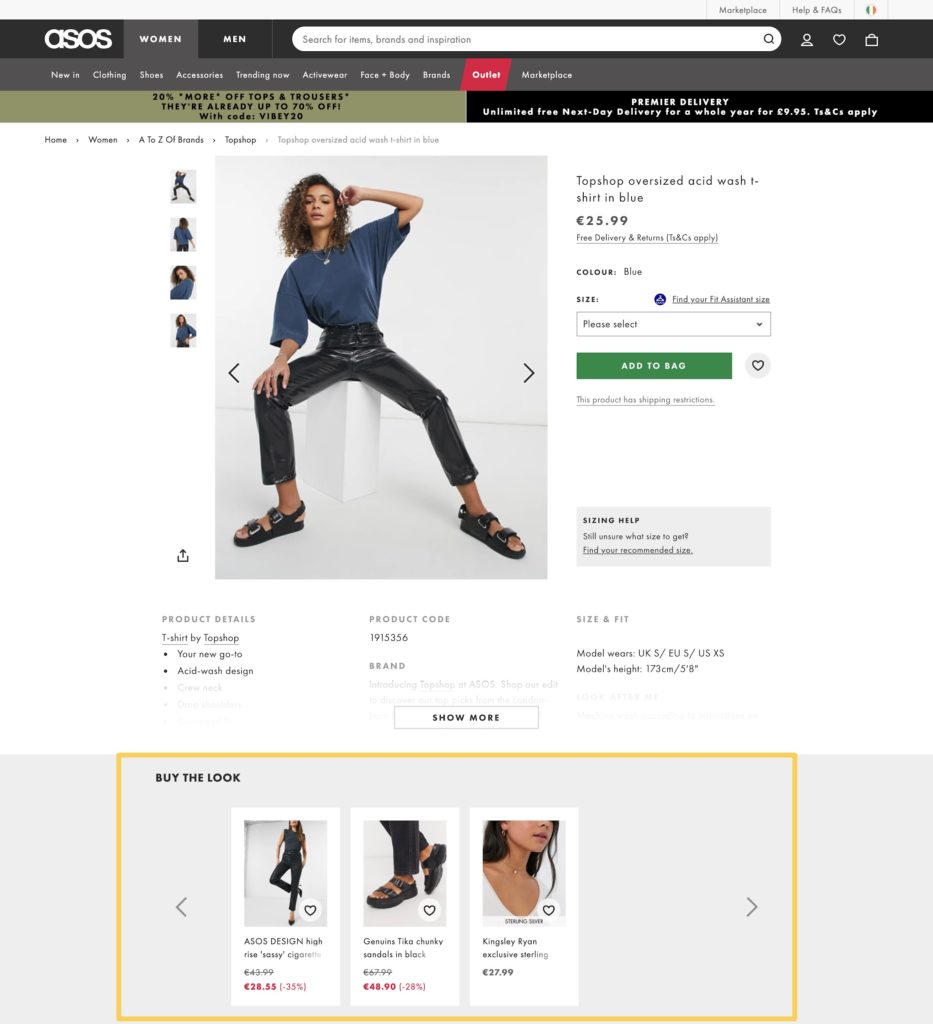
It makes sense. If a product grabs my attention enough to stop me from scrolling and click, I’m probably attracted to the entire look, not just the one product.
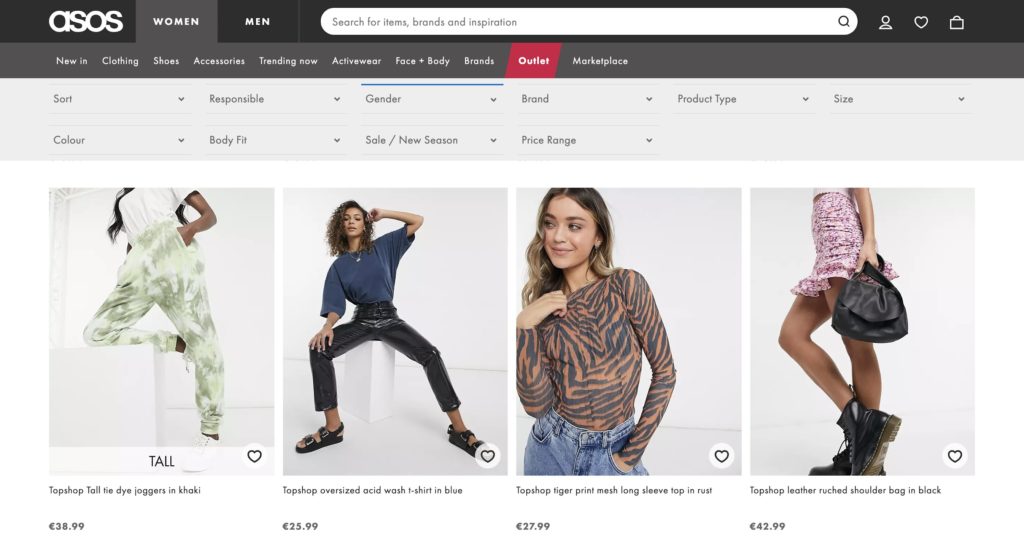
It helps me ensure I’m not buying complete outfits rather than one-off pieces that I can’t find anything to wear with, and it helps ASOS improve their RPV and average order value. Win/win!
Not a clothing retailer? This can be replicated across many different industries:
- Skincare brands can feature complimentary products to have their customers buy the entire routine
- Food and supplement brands can feature complimentary ingredients, snacks, or supplements to have their customers put together an entire meal or regimen
- Athletic wear brands might pair other frequently purchased products on product pages to encourage customers to gear up for the specific activity.
Strategic cross-selling can not only improve AOV, but it can also drive customer loyalty and superior brand perception as customers get the message that you are the go-to source to satisfy their needs in your industry.
#10. Maximize Customer Purchase Intent with In-Cart Upsells
The digital shopping cart, whether it’s a standalone page or slider, is valuable onsite real estate.
You’ve worked hard to move your customers through the funnel, and the cart is just one step from conversion.
Those who add items to their cart have a high purchase intent, and you can harness that intent via in-cart upsells.
These are the equivalent of point-of-purchase merchandising strategy in retail (putting small, enticing add-on items near the register for quick impulse buys).
Except, unlike at a brick and mortar store, in eCommerce you can use behavioral segmentation to offer add-on items that are relevant to the customers’ cart contents.
Casper does this with easy-add in-cart upsells. If you’re buying a mattress, you may need a mattress protector, a pillow, or a bed frame, so they suggest those in the cart.
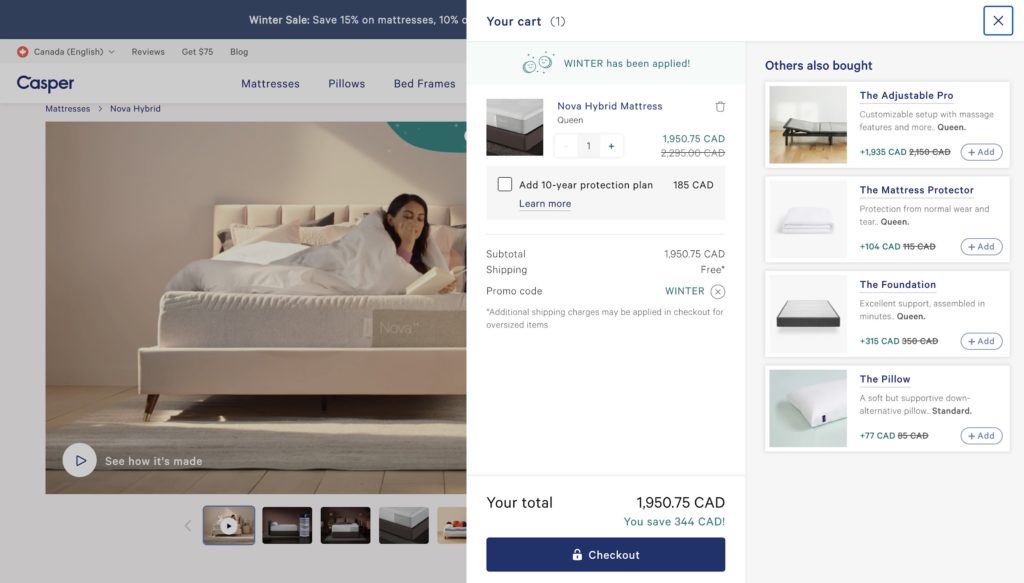
Casper employs behavioral segmentation to offer different products based on cart contents:
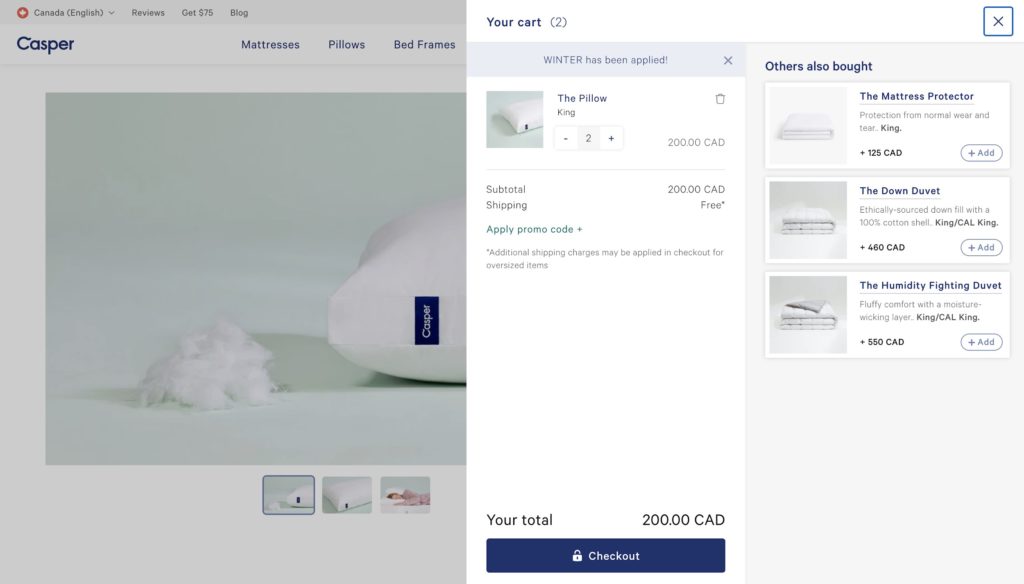
Since customers are already close to checking out when they are viewing their cart, not offering in-cart upsells leaves revenue on the table.
Increase AOV After the Purchase
These little-known methods of improving average order value are as close to “growth hacks” as you can come.
They’re super effective, and seem so obvious you’ll wonder why you weren’t always doing them.
#11. Take Advantage of Forward Momentum with Post-Purchase Upsells
There’s a prime piece of real estate that most eCommerce brands don’t take advantage of, and that’s the order confirmation page.
After your customers place their order, you have a massive opportunity to increase their cart size. Unfortunately, a traditional order confirmation page does nothing for your brand.
So instead of taking your recently converted customer to this:
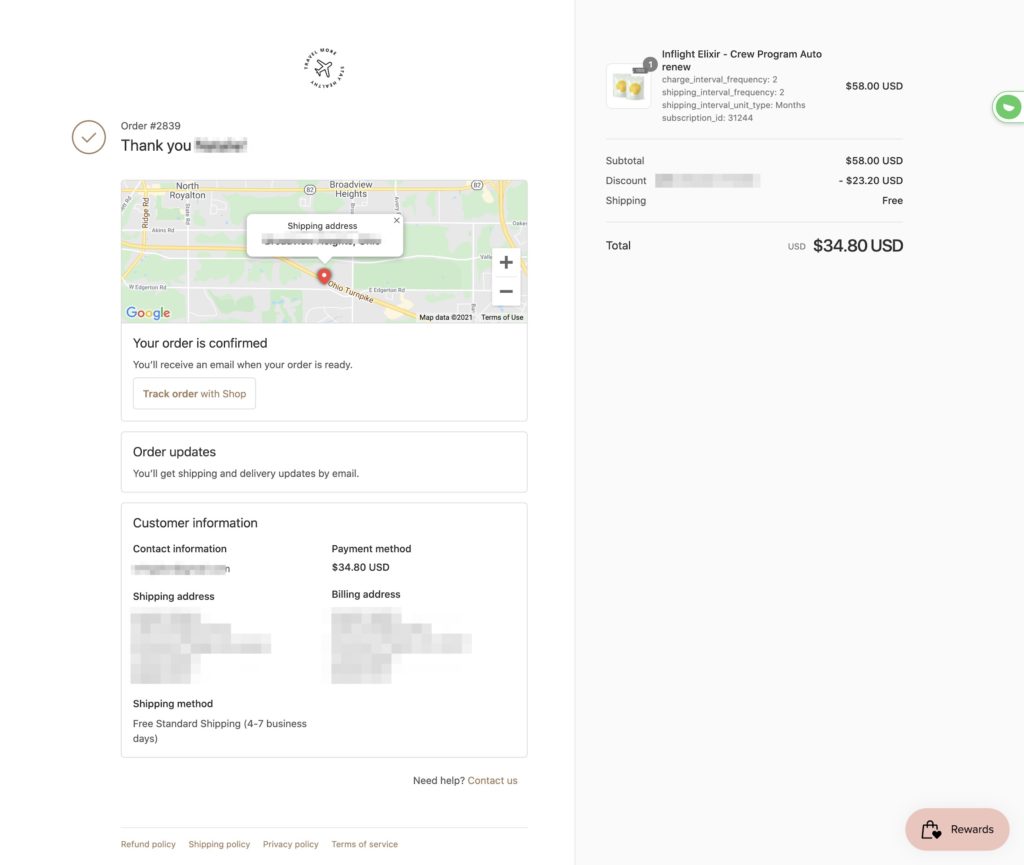
Why not use this page opportunity to introduce them to new products?
Check out how Magic Spoon does this.
After I completed my order, I was taken to this page instead of your traditional order confirmation page.
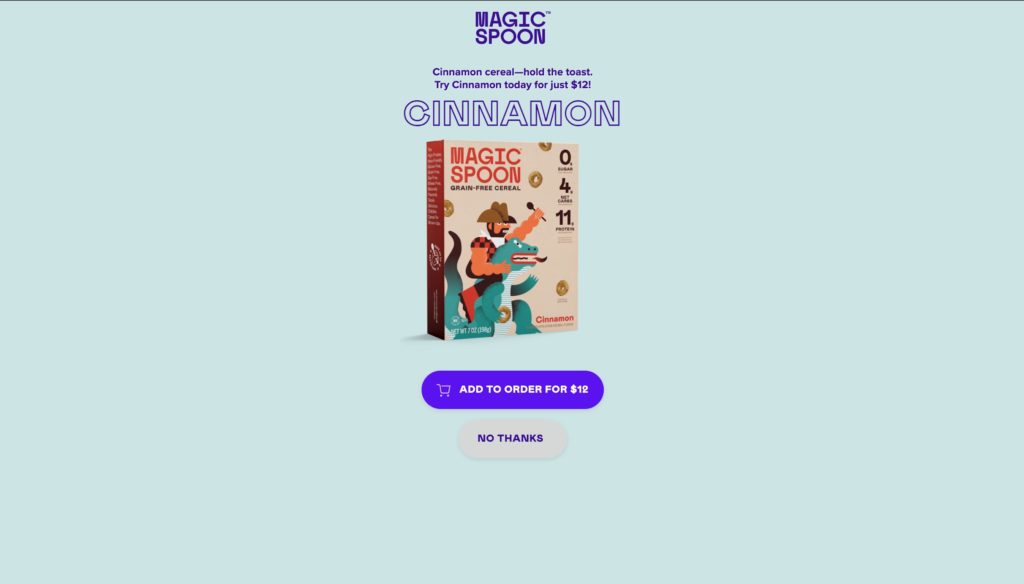
I didn’t have this flavor in my cart, and all I had to do was press the “Add to Order” button. It felt less painful since I didn’t see the entire value of my cart increase by $12, and I’d already made my purchase.
The additional flavor was added to my original shipment, so Magic Spoon didn’t have to ship it separately and absorb the cost of shipping a standalone product.
#12. Drive Last-Minute Additions with an “Add To Your Order” Email
Order confirmation emails have an average open rate of 70%[*], making them one of the most opened email types any brand will send.
Any email that is opened at that rate is the perfect opportunity for a call to action. Why not harness the forward momentum by offering your recent customers an upsell?
Called a “post purchase upsell”, these increase average order value by adding items to the order after the customer has completed their transaction.
For customers on a product subscription, add a call to action to add items to their “upcoming shipment” email.
Check out how Ipsy does this:
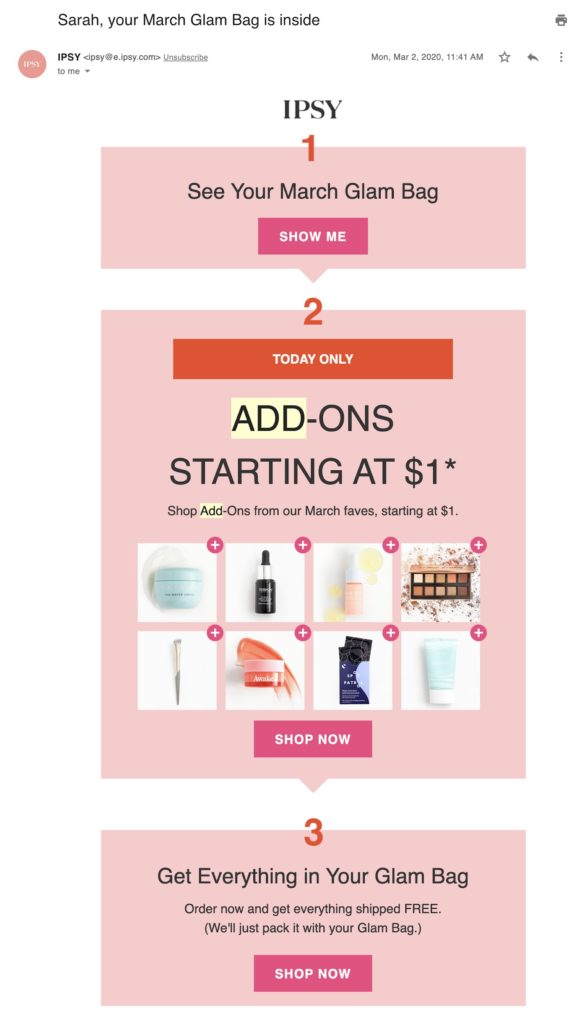
The Shop Now button takes subscribers to a landing page where they can add more items to their bag without having to pull their credit card out again.
The add-ons are packed with the original shipment, so Ipsy protects it’s margins and the customer gets it all together in one order.
Implement These Strategies and Watch Your AOV Climb
Your team works hard to attract, convert, and retain customers.
- You’ve developed content, resources and relationships with influencers and affiliates to drive qualified traffic to your eCommerce site.
- You’ve tested ad copy and audiences to retarget that non-converting traffic back to the site.
- You’ve optimized your onsite conversion funnel, providing a personalized customer experience, and offering the right promotion at the right time based on customer intent.
You’ve already laid a strong foundation, and your shoppers that are already at the conversion stage of the customer journey are already where you want them to be.
So now, maximize each session by encouraging a higher cart value with these AOV strategies.



